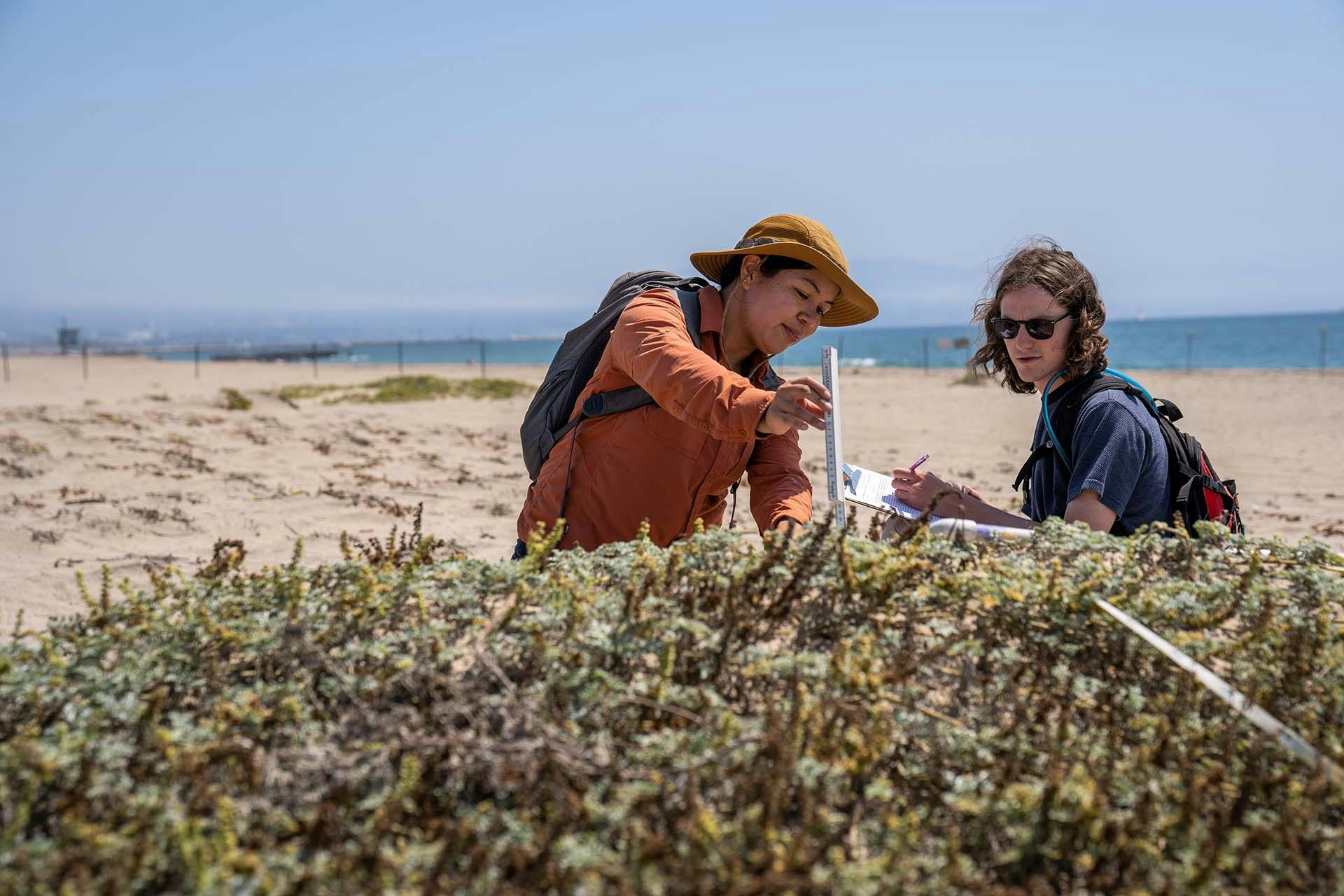Restoring Offshore Eelgrass and Establishing Beach and Coastal Bluff Habitat
The Dockweiler Beach Dunes aims to establish approximately four acres of sandy beach and coastal bluff habitat and implement a pilot restoration to establish adjacent offshore eelgrass within a one-acre footprint. This initiative establishes a healthy living shoreline that can support native plants and animal species both in marine and terrestrial ecosystems, while providing enhanced ecosystem services to the community, including benefits to wildlife, carbon sequestration, water quality improvement, nursery habitats, shoreline and sediment stabilization, dune formation, storm protection, and nutrient cycling.
One of the primary goals is to evaluate its potential to help buffer the effects of climate change such as sea level rise and erosion caused by large-wave events. These nature-based adaptation methods will help stabilize the shoreline, minimize coastal erosion, and maintain coastal processes while protecting and enhancing natural habitats for aquatic and terrestrial species.
Join us at an upcoming dune restoration event!
Project Highlights
